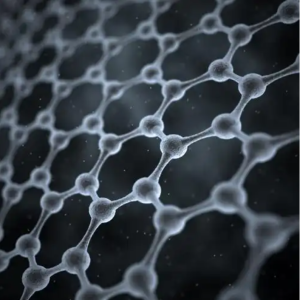Carbon Materials in Smart Cities and Green Architecture: Building the Future Sustainably

Introduction: Building the Carbon Age
As the world urbanizes rapidly, smart cities and green architecture are no longer futuristic concepts—they are urgent imperatives. To meet these evolving demands, the construction sector must rethink its materials from the ground up.
Enter carbon materials: from graphene-reinforced concrete to carbon nanotube smart coatings, these next-generation materials are unlocking breakthroughs in strength, sustainability, and functionality.
In this article, we explore how advanced carbon materials are reshaping how cities are built, powered, and maintained.
Part 1: The Problems with Traditional Construction
-
🏗 Concrete is responsible for ~8% of global CO₂ emissions
-
⚡ Buildings consume ~40% of total global energy
-
🌡️ Urban heat islands worsen due to heat-retaining surfaces
-
💰 Infrastructure maintenance costs are soaring due to corrosion and inefficiency
Carbon-based nanomaterials provide solutions that reduce emissions, enhance durability, and enable smart sensing, making cities not just greener but also smarter.
Part 2: Graphene-Enhanced Concrete and Cement
2.1 Strength and Durability
-
Graphene oxide (GO) improves hydration and crystal structure
-
Enhances compressive and flexural strength by 25–60%
-
Provides crack-bridging and reduced shrinkage
🧪 Case study: University of Exeter researchers found that adding just 0.03% graphene to concrete cut water permeability by 400%, drastically improving lifespan.
2.2 Environmental Impact
-
Requires less cement to achieve same or better strength → reduced CO₂
-
Incorporates recycled industrial waste like fly ash with graphene additives
-
Results in low-carbon building materials for eco-friendly certifications (LEED, BREEAM)
2.3 Market Readiness
-
Startups like Concrene and Graphenano are commercializing graphene cement
-
Ideal for urban infrastructure, bridges, tunnels, and high-rise foundations
Part 3: Carbon Nanotube (CNT) Smart Coatings
3.1 EMI Shielding in Smart Buildings
-
CNT coatings block electromagnetic interference (EMI) from 5G/IoT devices
-
Protects sensitive electronics in hospitals, offices, data centers
3.2 Smart Thermal Control
-
CNTs adjust thermal emissivity based on sunlight intensity
-
Can be integrated into “smart walls” or cool roofing systems
-
Reduces energy consumption for HVAC systems by 15–25%
3.3 Anti-Corrosion and Self-Healing
-
CNT-epoxy coatings on steel structures offer:
-
10x longer corrosion resistance
-
Microcrack detection and self-healing via conductive feedback
-
Part 4: Carbon-Based Sensors for Smart Infrastructure
4.1 Embedded Structural Health Monitoring
-
CNT/graphene sensors track:
-
Strain
-
Crack propagation
-
Moisture ingress
-
Load distribution
-
-
Enables predictive maintenance and extends structural lifespan
🏗 Example: CNT-sensor embedded bridges in South Korea monitor structural stress in real time, reducing inspection costs.
4.2 Air and Water Quality Monitoring
-
Graphene oxide sensors detect:
-
NO₂, CO, PM2.5, VOCs
-
Heavy metals in water
-
-
Compact and ultra-sensitive → ideal for smart poles, metro stations, HVAC systems
Part 5: Energy Applications in Smart Buildings
5.1 Graphene Transparent Solar Panels
-
Used as photovoltaic windows
-
Convert sunlight while allowing light transmission
-
Built into facades and skylights of high-rise buildings
5.2 Supercapacitor-Integrated Walls
-
Graphene-based wall panels that store energy from solar roofs
-
Provide backup power during outages
-
Scalable in modular housing and smart grid architecture
5.3 Thermal Insulation
-
Aerogels with graphene/CNT offer:
-
Extremely low thermal conductivity (~0.02 W/m·K)
-
Fire resistance
-
Moisture-proofing
-
🧊 Ideal for cold-chain logistics warehouses, green roofing, and low-energy homes in extreme climates
Part 6: Urban Mobility and Infrastructure
6.1 Roads and Pavement
-
Graphene asphalt lasts 2x longer with improved crack resistance
-
Reduces urban heat through infrared-reflective coatings
6.2 Lightweight Panels and Façades
-
Carbon composites used in:
-
Solar shingle roofs
-
3D-printed façades
-
Modular bridges
-
6.3 Water Treatment Systems
-
CNT membranes in municipal systems filter:
-
Bacteria
-
Heavy metals
-
Pesticides
-
-
Reduce chemical use, increase throughput
Part 7: Smart City Integration
| Function | Carbon Material Role |
|---|---|
| Smart grids | Graphene in batteries/supercapacitors |
| Traffic sensors | CNT strain gauges in pavement |
| Building automation | Conductive inks for printed sensors |
| Noise reduction | Graphene-based acoustic panels |
| Lighting systems | CNTs in OLED smart lighting |
Part 8: Market Trends and Future Outlook
8.1 Market Growth
| Segment | CAGR (2024–2030) |
|---|---|
| Smart Construction Materials | 19% |
| Graphene in Concrete | 28% |
| CNT Coatings | 24% |
| Urban Sensing Platforms | 30% |
8.2 Challenges to Address
-
Scalability: Need for large-volume, cost-effective carbon material production
-
Regulatory gaps: Few safety standards for embedded nanomaterials
-
Integration complexity: Requires cross-disciplinary engineering and software
8.3 Government and Private Support
-
EU’s “Green Deal” and China’s “Smart City 2030” both include carbon-based materials
-
Construction firms partnering with carbon tech startups for real-world pilots
Conclusion: The Carbon Foundation of Future Cities
Advanced carbon materials aren’t just enhancing building performance—they’re redefining what buildings can do.
By combining graphene’s versatility and CNT’s functionality, architects, engineers, and planners can create urban environments that are:
-
Smarter
-
Greener
-
Longer-lasting
-
More energy-efficient
-
Safer and more adaptive
🌍 In the race for sustainability and resilience, carbon nanomaterials are laying the foundation—literally—for tomorrow’s smart cities.

